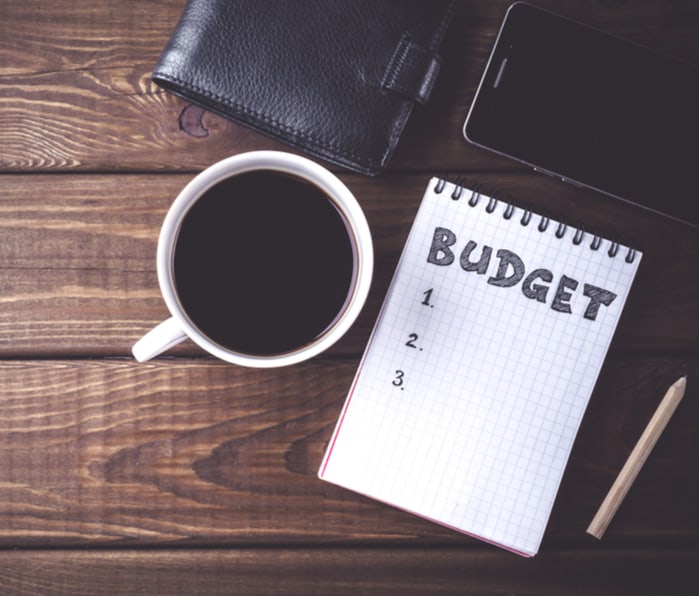You’ve likely heard of budgeting and how it can help you organize your finances, cut expenses and save more. Even with these clear benefits, many people are reluctant to create a budget or start one but don’t stick with it.
At its core, a budget is a plan for your money, but it’s so much more than that. Creating a budget can help you:
- Keep track of your income and expenses
- Accomplish financial goals faster
- Build your confidence with money
Perhaps most importantly, a budget helps you have more control over your money, so your money doesn’t control you.
Here are seven simple budgeting tips for beginners you can start implementing today.
Start with why
It might surprise you that our first tip has nothing to do with numbers (don’t worry, we’ll get to that). Before creating a budget, take a step back to think about why you want to create a budget and what you hope to get from the budgeting process.
For example, you may want to create a budget because you want to feel more in control of your finances. You can even take it a step further and think about how you will feel once you make a budget. Will you feel relief and like a weight has lifted from your shoulders? Will you feel more positive about your future and confident in your ability to achieve your financial goals?
Taking a few moments to think about your “why” behind starting the budgeting process will help prime your brain for success.
Stick with the basics
A budget in its simplest form is simply a list of your income and expenses. A budget doesn’t have to be anything fancy — start by taking out a blank sheet of paper and writing “income” on one side and “expenses” on the other.
- Income: This includes all income sources such as paychecks, investment income, side hustles, etc.
- Expenses: Be sure to include your “fixed” expenses such as housing costs and discretionary expenses like entertainment, restaurants, and clothing.
Once you have a detailed list of your income and expenses, use this simple formula:
Income – expenses = cash flow
Your cash flow is what you have leftover after all of you pay your bills. If the number is negative or “in the red,” it means you are spending more than you earn. You will either have to cut expenses, increase income, or a combination to get back into the green.
Track your spending
Budgets often fail because people skip a crucial step of tracking their spending. Tracking your spending is important because there is likely a difference between what you think you spend versus what you actually spend.
For example, you create a budget and estimate that you spend about $500 a month on groceries. By the end of the month, you’re out of money and wonder what went wrong, and you may even give up on budgeting out of frustration. However, if you track your spending, you might realize that you spent $1200 on groceries — uncovering why your budget wasn’t working.
Tracking your spending helps bring awareness to budget leaks and empowers you with information. Now that you’re aware of your spending and problem areas, you can make different choices. Tracking spending must be part of the process to give your budget the best chance at success.
Try out different budgeting methods
There are many ways to budget your money — the key is to test out different methods to find what works for you. Here are a couple of the most popular budgeting methods:
- Zero-based budget: The idea behind the zero-based budget is that you want every dollar to have a purpose. If you earn $4,000 a month, you want your expenses to add up to $4,000. This doesn’t mean spending every dollar you have — you should earmark some for savings and other financial goals. Budgeting down to zero ensures you don’t leave any money on the table.
- 50/30/20 budget: The 50/30/20 budget method is another well-known budgeting method. It is more flexible than the zero-based budget because it uses guidelines instead of counting every dollar. This method states that you should break down your spending into three main categories: 50% to needs, 30% to wants, and 20% to financial goals such as savings and debt payments.
Choosing a budgeting strategy depends on your personal preferences. If you prefer more flexibility with budgeting, you may want to go with the 50/30/20 method. On the other hand, if you believe the more detailed a budget, the better, try the zero-based strategy.
Set financial goals
One of the key benefits of budgeting is it gives you the chance to think about what you want your money to do for you, AKA the financial goals you want to achieve. Without a budget, it’s easy to get caught up in the day-to-day and not think ahead on how you can use your money to reach the goals that are important to you.
Automation is your new best friend
Automation can bring your budgeting game to the next level. How does automation complement the budgeting process?
- Boost savings: Automation is one of the fastest and most low-effort ways to increase your monthly savings rate. Consider setting up automatic transfers into your savings account once you create your budget and know how much you can save each month (for a simple savings rule, check out our guide to the 30-Day Savings rule).
- Never miss another due date: Automation streamlines the budgeting process because you no longer have to remember multiple due dates. Once you set up automatic payments, you’ll never have to remember to pay your bills again.
Monthly financial check-ups
Budgeting is an ongoing process, not a one-off event. It’s crucial to review your budget at least monthly to ensure it’s on track and nip any issues in the bud. Monitoring your budget allows you to address any problems such as unexpected expenses. It’s a good idea to fund your emergency fund as soon as possible to help protect your budget from the unexpected.
Final thoughts
Though setting up your budget may take some trial and error initially, it will save you time, money, and stress in the long run. Remember to start with why, keep it simple, track spending at least once a month, and adjust as needed.


